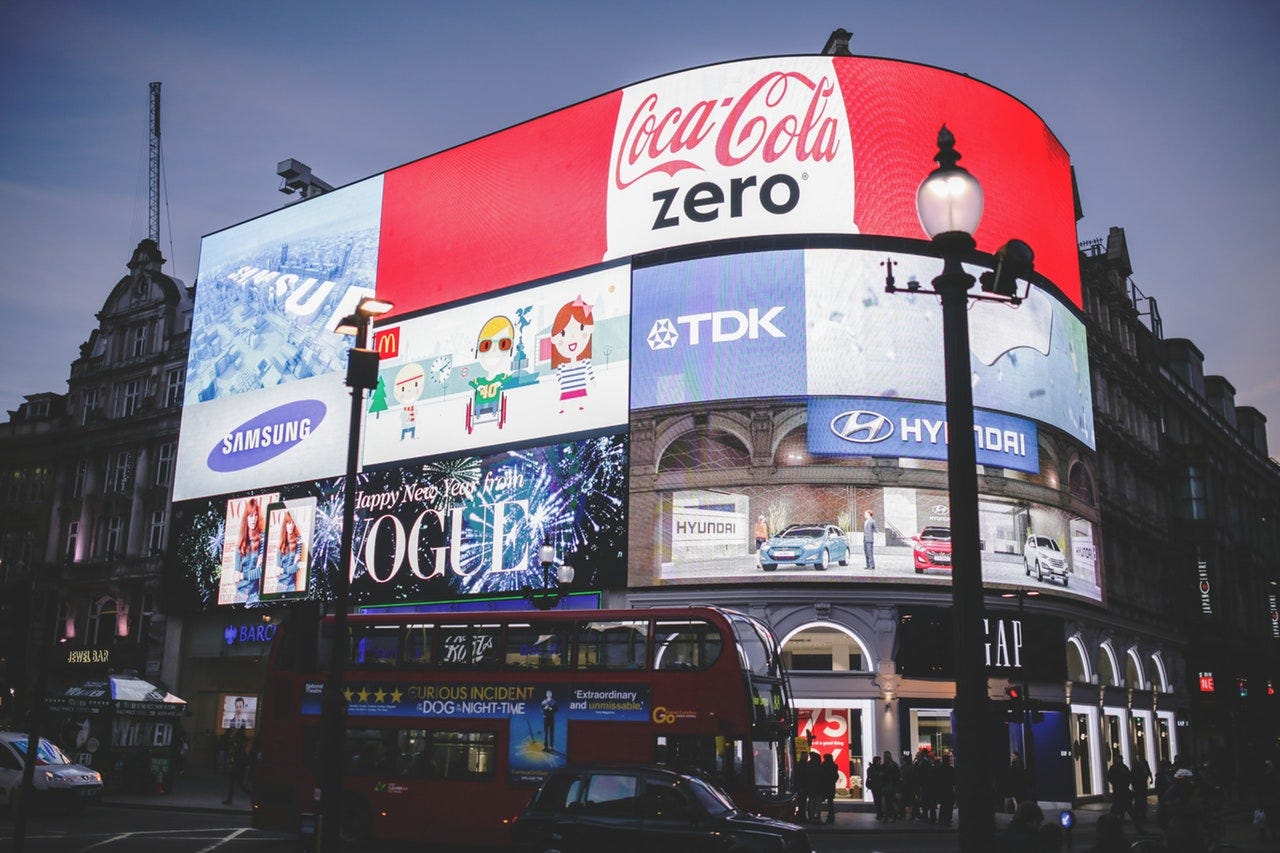Media Companies Make All Of Their Revenue Using Which Of The Following Methods?
How many ways are there to make money in media?
We've come upwards with eighteen of them

Generating an income from the digital media we create has got a lot more complex and the number of ways to do it has increased. At the JamLab Accelerator, we accept seen teams experiment with sponsorships, eventing and consulting services to create new income streams.
Nosotros were inspired recently by a talk at JamLab by Riaan Wolmarans — Managing Editor for digital at the Tiso Blackstar group in Johannesburg. Wolmarans set out many of the ways his grouping has tried to generate income through their online platforms, the nearly popular of which, TimesLIVE, gets more than four million visits per month. Not all have worked for them, but they are all working for someone, somewhere.
Then we've taken his examples and added some of our own to produce a list of 18 means to generate income from digital journalism and media. You may have tried one or two only are there others y'all should consider? A contempo written report on journalism funding in S Africa (pdf) from Rhodes University suggests that new types of revenue generation are showing promise. This is our start attempt to list them. We hope to meliorate the listing from time to time and write up more case studies to rails what is working and what is not. We are also holding a workshop on revenues with the Global Investigative Journalism Network in October. Run into the finish of this article for details.
We have grouped the listing into four categories. Offset, advertising and income related to selling audiences to marketers. 2nd, content revenues — where the audition or others pay for the content created (like subscriptions). 3rd, extending the range of products and services (like events or e-commerce). Lastly, we've listed revenues that are not-commercial — donations and public funding.
Advertising and related income
The offset group of income streams come from marketers who have ever been a major source of revenue for media businesses.

Advert used to be pretty elementary. Virtually newspapers and magazines sell adverts by size and by prominence (a quarter-folio ad on the front page is more expensive than an ad on page 4). Radio and television channels besides sell advertising — usually in 30" blocks of fourth dimension. The more popular the show, the more they charge.
The move to digital has disrupted advertising. Media companies now compete with Google and Facebook equally well as online retailers and many others for advertisement revenues. According to one recent research report, Google and Facebook business relationship for over 60% of all digital advertising revenues globally. That leaves less and less for media publishers. And marketers are being offered many new means of engaging with potential customers. So publishers need to respond.
While media publishers demand to innovate in how they work with commercial partners, many of the new approaches also bring risks for the credibility, independence and trust that they need to keep their relationships with their audiences.
one. Premium brandish ads
The original 'banner ads' that start appeared on the earth wide web in the 1990s. Wolmarans said that these were working less and less well for Tiso Blackstar and were becoming harder and harder to sell. Challenges included advertizement blockers and contest from Google and Facebook. For a (negative) perspective on whats gone incorrect with advertising online from one of the people who invented the popular-up advert see Ethan Zuckerman's interview with New York Magazine before this year. The founder of medium.com abandoned advertising terminal year proverb the ad-driven model was broken but it remains a mainstay of many digital publications.
two. Programmatic advertizing
Programmatic advertising is automated advertising. Instead of selling ads to individual marketing customers, digital media offers space to intermediaries who place ads according to profiles of who their clients want to reach. It is oft combined with automatic behest systems that decide the price paid for the ads. From the media publisher's signal of view, Wolmarans pointed out that information technology saves time and money — you don't need a sales team to practice it. But revenues are lower and there is also a quality problem. Those Bitcoin investment ads yous see on many news sites are usually placed through programmatic advertising.
3. Sponsorships
Sponsorships ordinarily involve a commercial partner supporting and adding their brand to an ongoing content strand or series. Wolmarans says Tiso Blackstar has found strong revenues in sponsorships though there is a danger of over-promising and under-delivering. It requires being able to clearly define the value that the client will receive.
iv. Atomic number 82 generation campaigns
Traditionally marketers but wanted 'eyeballs', often priced in CPMs — costs per thousands (technically, "cost per mille") — just there is a trend for marketers to look for more than than just eyeballs. 'Atomic number 82 generation' campaigns are an example of this. They involve the publisher in delivering prospective customers — with their contact details — to the door of the marketer. If media publishers are sending out email newsletters for example they can include information about a product or service and can charge marketers for each person who then expresses an interest in knowing more (past filling in an online form for example).
5. Social media distribution
Social Media platforms have offered publishers distribution through services like Instant Articles which offer publishers the choice to identify their own ads in stories they publish or to let Facebook place ads for a cutting of the revenues. Some major publishers use this platform but many avoid information technology, sometimes considering they are concerned most handing over a core role of their business organization to what is at present one of their major competitors. Its a 'no' from Wolmarans.
6. Paid social reach
Digital media publishers often invest heavily in building social media audiences. Some so sell admission to this audition to marketers (as do all sorts of social media influencers like Kim Kardashian). Wolmarans warned that it was easy to annoy audiences with this and, as with 'native content' (see below) labelling and compromising editorial credibility was a risk.
7. Multimedia
Many news organisations that originated in print have had to look at diversifying their storytelling — producing videos and podcasts for case. Pre-scroll ads on videos and ads on podcasts seem to be working for some publishers with marketers willing to pay premiums for these forms of advertising.
8. Native content
Native content is the new term for a very old model — what used to be called 'advertorial'. Wolmarans argued that digital offered ways of delivering this in ameliorate ways. He said this was proving an of import revenue stream only required a high level of effort and investment. It needed to be produced in-firm by journalists and also needed a skilled sales team. Labelling information technology conspicuously was essential.
Audience Revenues
Print media traditionally charges readers for their newspapers and magazines. Many broadcasters offering their content for free.

More and more digital publishers are now charging for some though not all of their content but this is frequently difficult for small publishers.
The mechanics of payment take to be straightforward for the reader, listener or viewer. Content must be original and important enough for people to be willing to pay and paywalls usually mean that there is a loss in the total audition which leads to loss of ad revenues.
ix. Subscriptions and memberships
Most major news media houses in S Africa have now moved to a subscription model, introducing paywalls for their digital content. Wolmarans argued that in that location was increasing evidence that readers were willing to pay. But in that location was room to innovate. He besides described the pressure paywalls put on newsrooms. If people are paying for content they expected high quality. It also needs subscription and login processes to be as seamless as possible.
At that place are alternatives to building an online paywall. There are a number of specialist paid-for subscription newsletters, like Africa Confidential, that have survived the move to digital by delivering via email.
There are also new approaches to raising income from readers, listeners and viewers that are geared towards smaller, local and specialist media. One approach is creating memberships. Bristol Cable, a local news digital and impress publication in Bristol in the UK is run equally a reader co-operative with two,000 members paying monthly or annually. In the US, Civil has established a marketplace for readers to support a range of local and international news organisations. In Due south Africa, the non-turn a profit investigative newsroom, Amabunghane has raised more than a quarter of its running costs from reader donations.
10. Pay per view
At that place is plenty of room to innovate in paywalls. One primal challenge, especially in Africa, is to move from long-term subscriptions to more flexible pay-as-yous-go models that have proved successful in mobile communications. The Sunday Times, for case has introduced a 'solar day laissez passer'. In some markets with good and widely used mobile money systems, in that location could be opportunities to explore mobile micropayments so people can easily pay per commodity.
eleven. Syndication
Syndication — selling your content to other publishers to distribute to their audiences — is one of the oldest streams of revenue for publishers. It worked well when publishers were express to geographies so African newspapers, for example, could syndicate their stories to newspapers in other countries. But the internet has broken downwardly these boundaries and Wolmarans thought there were few examples of successful syndication in South Africa.
Additional Products and Services
Many media organisations, from The Economist and The Guardian to the Daily Maverick have started creating new products or services that extend their brands and offering new income streams.

12. Events
News media organisations have often built trusted brands. Global groups like The Economist and the Fiscal Times have extended their brands into major events businesses, hosting events across the globe. Tiso Blackstar has created an events division that aims to follow this trend. The Daily Bohemian holds an almanac gathering. These offering income from ticket sales besides every bit new sponsorship opportunities.
13. E-commerce
Some media outlets now sell diverse products from their websites — the Guardian in the UK sells books, as does the New York Review of Books in the US, others like the New Yorker sell merchandising from cartoons to coffee mugs. Wolmarans warned of the dangers of staying consistent with make values and not compromising editorial independence and credibility.
xiv. Paid reports
The Economist's Intelligence Unit of measurement and Business organization Insider'due south Intelligence offer in-depth research reports which they promote in their other publications. These oft leverage from their work washed for their publications.
15. Media and journalism services
Some news organisations are beginning to look at whether their skills sets and capabilities can exist offered equally services to other businesses. One of our teams in the JamLab Accelerator has experimented with offering consulting and networking services, and other African media outlets are reported to be selling their expertise in data analytics.
Donations and Public Funding
Looking across the media mural in S Africa, we can see how of import public funding and donations have been in sustaining journalism and other media.

sixteen. Legally mandated public funding
In South Africa, the South African Broadcasting Corporation (SABC) is at least partly funded through a licence fee which all owners of television sets are obligated to pay. This is similar to the funding model of the BBC in the UK, although in SABC's case they are mostly reliant on advertizement. The MDDA, a public bureau partly funded by the media manufacture has also supported customs radio and other media. In Due south Africa and elsewhere at that place have been discussions nearly extending the public funding model to allow a wider range of media organisations to apply for support for publications in the public interest.
17. Funding from foundations and trusts
Looking across the media landscape in South Africa, Foundations and Trusts play a major role. The Mail and Guardian (M&G) has been invested in by the Media Evolution Investment Fund, a US based non-profit. The Pecker and Melinda Gates Foundation also back up health reporting in the M&Grand. Community radio has been supported for many years by the Open Society Foundations — which has also supported many other media initiatives. Across the continent, the Open Society Foundations, MacArthur Foundation, Omidyar Network have all supported media. In South Africa, Omidyar and OSF-SA take funded the South African Media Innovation Program which is investing $4m dollars between 2017 and 2020. JamLab will be publishing a list of funders soon.
18. Crowdfunding
Crowdfunding — raising small contributions from a big number people — has been used by a number of media startups and by investigative journalism teams. It has often been successful for individual journalism or video projects.
What adjacent?
We hope this list is a starting point for whatever African digital media maker to call back about how they tin become more than sustainable. But exist warned — equally Wolmarans emphasised in his talk — each of these potential revenue streams requires significant try and investment to pay off.
Thanks to Riaan Wolmarans for allowing us to draw extensively on his insights. He was one of the speakers at a Sales and Development workshop run by Carl Davis and Matthew Buckland of Burn Media held by South African Media Innovation Program and hosted by JamLab at Tshimologong Digital Innovation Precinct , Johannesburg, in June.
On October 30th, JamLab is running a workshop with the Global Investigative Journalism Network on the business of journalism with international experts from Europe and the Usa and media innovators from Nigeria and S Africa , every bit office of the African Investigative Journalism Conference at the University of the Witwatersrand in Johannesburg. Information technology's a great opportunity for African media startups and media publishers to engage with other people grappling with these bug. If you would like to register go to: http://journalism.co.za/aijc18/aijc18-registration/
This article was edited on 9th Oct adding some additional examples of audience revenues.
Media Companies Make All Of Their Revenue Using Which Of The Following Methods?,
Source: https://medium.com/jamlab/how-many-ways-are-there-to-make-money-in-media-88e249a31e97
Posted by: cravenalling69.blogspot.com


0 Response to "Media Companies Make All Of Their Revenue Using Which Of The Following Methods?"
Post a Comment